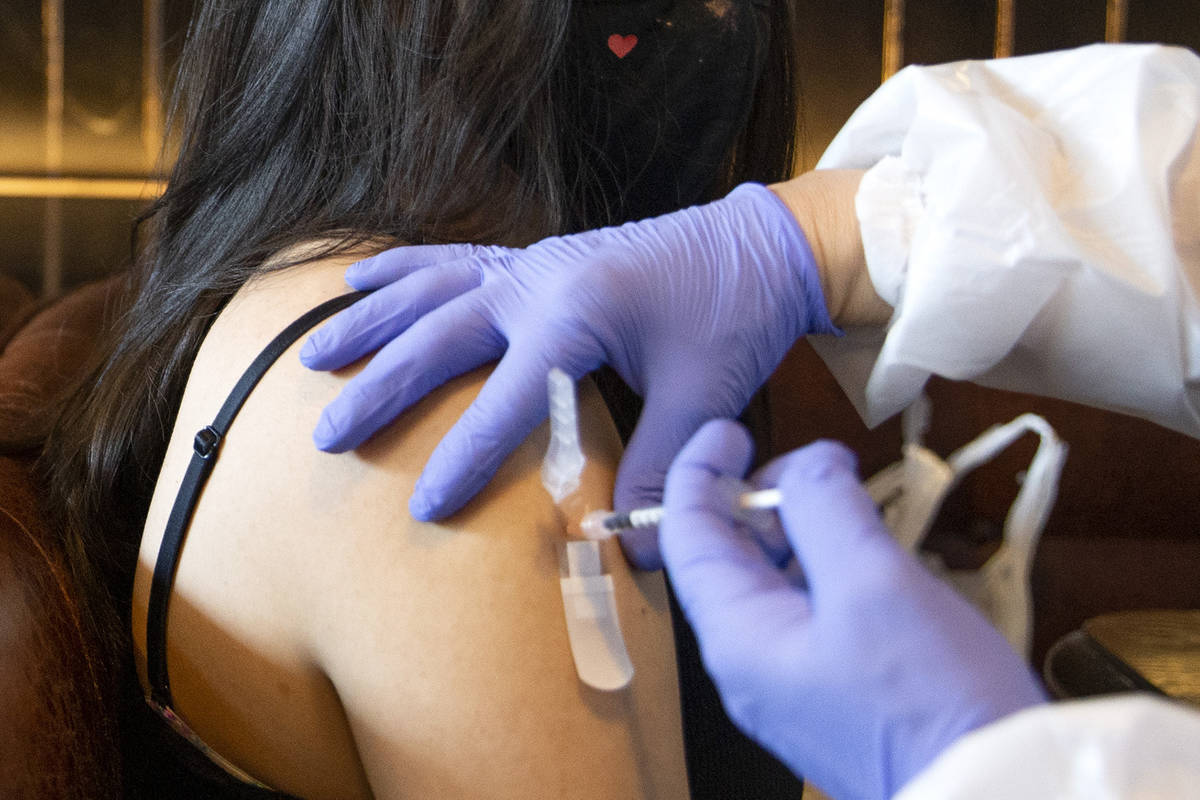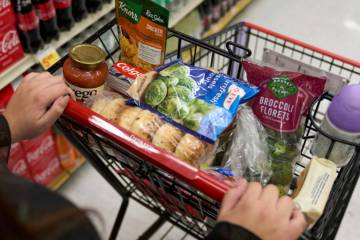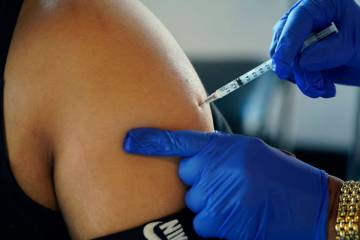COVID metrics send mixed signals on whether Nevada surge has crested
Nevada’s COVID-19 metrics continued to send mixed signals on Thursday, with 1,413 new coronavirus cases and 11 deaths recorded over the preceding day amid another drop in the state’s test positivity rate.
Updated numbers posted by the state Department of Health and Human Services on the state’s coronavirus website pushed the state totals to 377,493 cases and 6,259 deaths.
New cases were far above the two-week moving average, which increased slightly from 930 to 932. It was the highest number of cases added on a single day not immediately following a weekend since the state logged 1,501 new cases on Jan. 23, according to records maintained by the Review-Journal.
Deaths were right at the average of 11 per day, which was unchanged from the previous day, the lowest daily figure reported since Aug. 3.
The number of suspected or confirmed COVID-19 patients hospitalized in the state increased by 34, from 1,217 to 1,251, continuing a recent pattern of daily fluctuations along a relatively flat trend line.
The jump in Thursday’s update came a day after the Nevada Hospital Association said in its weekly report that hospitalizations in the southern part of the state “may have crested,” though facilities in the north were continuing to see caseload increases.
Data guide: COVID-19’s impact on Nevada
Some hospitals in the region “are reporting having some difficulties transferring patients for a higher level of care,” the trade group said. “The percentage of patients in the hospital with COVID-19 has also been elevated to watch status based on multiple weeks of increasing patient counts, albeit currently, COVID-19 patients are not overwhelming the hospital infrastructure.”
The state’s two-week test positivity rate, which essentially tracks the percentage of people tested for COVID-19 who are found to be infected, continued to drop on Thursday, reaching 15.2 percent.
The rate, which began rising steadily after hitting a recent low of 3.3 percent on June 9, has now dropped more than a percentage point from its recent peak of 16.3 percent on Aug. 13.
Candice McDaniel, deputy director of programs for the Nevada Department of Health and Human Services, said at a news briefing Thursday that it’s too soon to sat whether the state has reached the peak of the current surge of coronavirus metrics. But she said state officials were very encouraged by the decreases, especially the test positivity rate.
“We are so thrilled with watching it go lower,” she said. “But it’s still high. And so we’re still in that place where we need to promote vaccination, we need to promote all the mitigation measures that we know work like masking.”
State and county health agencies often redistribute the daily data after it is reported to better reflect the date of death or a test or onset of symptoms, which is why the moving-average trend lines frequently differ from daily reports and are considered better indicators of the direction of the outbreak.
As metrics have surged, the state has reported a significant increase in its vaccination numbers. State data now shows that 49.84 percent of eligible Nevadans 12 and older have been fully vaccinated.
Clark County, meanwhile, recorded 918 new COVID-19 cases and nine additional deaths over the preceding day, according to data posted Thursday by the Southern Nevada Health District on its coronavirus web page. That brought county totals to 296,022 cases and 5,014 deaths.
The county’s two-week test positivity rate decreased by 0.5 percentage point on Thursday, to 14.8 percent.
Contact Jonah Dylan at jdylan@reviewjournal.com. Follow @TheJonahDylan on Twitter.
Nevada vaccinations
—12+ population: 2.64 million.
— Doses administered: 2.83 million.
— Vaccinations initiated: 1.62 million.
— Vaccinations completed: 1.33 million.
— Eligible fully vaccinated: 49.84 percent.
Sources: Department of Health and Human Services; U.S. Census Bureau










































